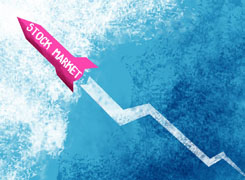Ramalingam Kalirajan |10925 Answers |Ask -Follow
Mutual Funds, Financial Planning Expert - Answered on May 15, 2024
He has an MBA in finance from the University of Madras and is a certified financial planner.
He is the director and chief financial planner at Holistic Investment, a Chennai-based firm that offers financial planning and wealth management advice.... more

Hi Sir, My name is Krishna & I am 38 years old and I have a savings of around 40Lakhs in bank in FD's and I started investing 20000 every month from Jan-2024 in these mutual funds [DSP Nifty 50 Equal Weight Index Fund Direct-Growth, HDFC Index Fund Nifty 50 Plan - Direct Plan, Nippon India Large Cap Fund - Direct Plan, Edelweiss Large Cap Fund - Direct Plan, ICICI Prudential Bluechip Fund - Direct Plan-Growth, Kotak Emerging Equity Fund - Direct Plan, Motilal Oswal Midcap Fund - Direct Plan,Axis Small Cap Fund - Direct Plan, Kotak Multi Asset Allocator FoF - Dynamic - Direct Plan, Edelweiss Aggressive Hybrid Fund - Direct Plan]. I checked through money control and value research before investing in these mutual funds. Please let me know if my investments are good?
Your commitment to financial planning and investment is commendable. Let's analyze your mutual fund portfolio to ensure it aligns with your goals and risk tolerance.
Portfolio Composition
Your portfolio comprises a diverse range of mutual funds, spanning various categories including large-cap, mid-cap, small-cap, index funds, and hybrid funds. This diversified approach spreads risk across different market segments and investment styles.
Fund Selection
Index Funds: Investments in index funds like DSP Nifty 50 Equal Weight Index Fund and HDFC Index Fund Nifty 50 Plan provide exposure to the broader market, capturing the performance of the Nifty 50 index constituents.
Active vs. Passive Management:
While you've included both actively managed mutual funds and index funds (ETFs) in your portfolio, it's important to understand the differences between the two. Actively managed funds aim to outperform the market through active stock selection and portfolio management, while index funds passively track a specific index's performance.
Benefits of Actively Managed Funds:
Actively managed funds offer the potential for higher returns compared to index funds, especially during market inefficiencies or when skilled fund managers can identify lucrative investment opportunities. Additionally, active management allows for flexibility in portfolio construction and adjustments based on market conditions.
Potential Disadvantages of Index Funds:
While index funds offer low expense ratios and broad market exposure, they may lack the potential for outperformance compared to actively managed funds. Additionally, they're subject to tracking error, which occurs when the fund's performance deviates from the index it's designed to replicate.
Large Cap Funds: Nippon India Large Cap Fund, Edelweiss Large Cap Fund, and ICICI Prudential Bluechip Fund offer stability and growth potential by investing in established companies with strong fundamentals.
Mid Cap and Small Cap Funds: Motilal Oswal Midcap Fund and Axis Small Cap Fund aim to capitalize on the growth potential of mid-sized and small-sized companies, albeit with higher volatility.
Hybrid and Multi-Asset Funds: Kotak Multi Asset Allocator FoF - Dynamic and Edelweiss Aggressive Hybrid Fund provide a blend of equity and debt exposure, suitable for investors seeking balanced returns with lower risk.
There are some advantages to consider direct funds, and the cost savings can be significant in the long run. However, there are some potential benefits to using a regular MFD:
Advantages of Investing Through a Mutual Fund Distributor (MFD):
• Personalized Advice: MFDs can be helpful for beginners or those who lack investment knowledge. They can assess your risk tolerance, financial goals, and investment horizon to recommend suitable mutual funds. This personalized guidance can be valuable, especially if you're new to investing.
• Convenience: MFDs handle all the paperwork and transactions on your behalf, saving you time and effort. They can help with account setup, SIP registrations, and managing your portfolio across different funds.
• Investor Support: MFDs can be a point of contact for any questions or concerns you may have about your investments. They can provide ongoing support and guidance throughout your investment journey.
Fund Research
Cross-referencing your fund selections with reputable sources like Moneycontrol and Value Research is a prudent approach. These platforms offer valuable insights into fund performance, risk metrics, and portfolio composition, aiding informed investment decisions.
However, relying solely on mutual fund ratings overlooks individual financial goals and risk tolerance. Ratings may not account for changing market conditions or long-term performance. Blindly following ratings can lead to a mismatched portfolio, potentially resulting in suboptimal returns and increased investment risk over time.
Continuous Monitoring
Regularly reviewing your portfolio's performance, fund ratings, and market dynamics ensures alignment with your financial goals and risk appetite. Periodic rebalancing and adjustments may be necessary to optimize returns and manage risk effectively.
Conclusion
Your mutual fund portfolio exhibits diversity and a thoughtful selection process, indicating a sound investment strategy. By staying informed, maintaining a disciplined approach, and periodically reassessing your investments, you're well-positioned to achieve your financial objectives.
Best Regards,
K. Ramalingam, MBA, CFP
Chief Financial Planner
www.holisticinvestment.in
You may like to see similar questions and answers below
Ulhas Joshi |280 Answers |Ask -Follow
Mutual Fund Expert - Answered on Jun 20, 2023
Ramalingam Kalirajan |10925 Answers |Ask -Follow
Mutual Funds, Financial Planning Expert - Answered on May 21, 2024
Reetika Sharma |459 Answers |Ask -Follow
Financial Planner, MF and Insurance Expert - Answered on Dec 24, 2025
Reetika Sharma |459 Answers |Ask -Follow
Financial Planner, MF and Insurance Expert - Answered on Dec 24, 2025
Reetika Sharma |459 Answers |Ask -Follow
Financial Planner, MF and Insurance Expert - Answered on Dec 24, 2025
Reetika Sharma |459 Answers |Ask -Follow
Financial Planner, MF and Insurance Expert - Answered on Dec 24, 2025
Reetika Sharma |459 Answers |Ask -Follow
Financial Planner, MF and Insurance Expert - Answered on Dec 24, 2025
Reetika Sharma |459 Answers |Ask -Follow
Financial Planner, MF and Insurance Expert - Answered on Dec 24, 2025
Reetika Sharma |459 Answers |Ask -Follow
Financial Planner, MF and Insurance Expert - Answered on Dec 24, 2025
Reetika Sharma |459 Answers |Ask -Follow
Financial Planner, MF and Insurance Expert - Answered on Dec 24, 2025
Reetika Sharma |459 Answers |Ask -Follow
Financial Planner, MF and Insurance Expert - Answered on Dec 24, 2025
Reetika Sharma |459 Answers |Ask -Follow
Financial Planner, MF and Insurance Expert - Answered on Dec 24, 2025



















